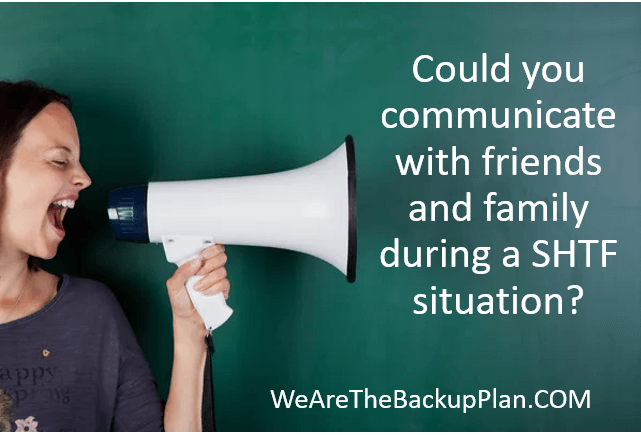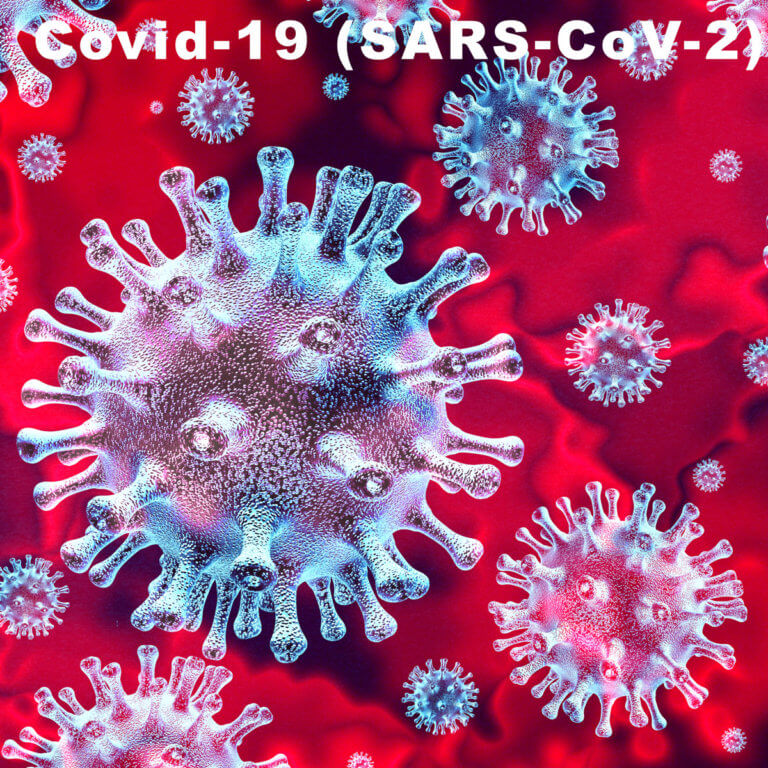To Mask or Not to Mask
Mask up if you want to. If you are sick with Covid or Influenza (or aren’t sure if you are sick) stay home. If you must travel when sick if you suspect you are sick, definitely mask up. There is evidence that it reduces transfer for a sick person.
With the demonstrated risk of face masks; mask wearing should be a choice, not a legal mandate that includes fines and jail time.
But legally mandating masks is simply wrong. There is no widespread scientific support for forced mask use. If you are support or are a government official thinking about mandating masks because of increasing infections you are looking at the wrong measure. Instead focus on deaths and hospitalization rates, those are the only two that count. If your hospital ICU load is over 50% regionally, or your death rates spike focus on that. Focus on protecting nursing homes, over 40% of deaths have been from people in nursing homes.

NIH: https://pubmed.ncbi.nlm.nih.gov/32027586/
In a pandemic all masks do is slow the spread, which was meant to flatten the curve. That means keeping hospitalizations below 100% ICU load. The highest load in the USA as of 7/11 is 22% (in new york) Source: https://gisanddata.maps.arcgis.com/apps/opsdashboard/index.html#/bda7594740fd40299423467b48e9ecf6 So you don’t need to worry about flattening the curve. So maybe you are trying to stop deaths?
What about the petri-dish video? It is true it reduces particulates directly in front of the individual. That video doesn’t show real world data as noted below. It doesn’t show numerous other videos show the plume and particles around the individual and trailing the walking individual. If masks worked so well how did it get out of China?
Video from Good Morning America explaining why facemasks should be limited to those who are sick. https://www.goodmorningamerica.com/news/video/realities-facemasks-fight-coronavirus-exposure-69252522
The following are 34 references with links to studies indicating little, or no positive results from wearing a mask to stop the transfer of viruses.
(1) Moisture retention, reuse of cloth masks and poor filtration may result in increased risk of infection. Further research is needed to inform the widespread use of cloth masks globally. However, as a precautionary measure, cloth masks should not be recommended for HCWs, particularly in high-risk situations, and guidelines need to be updated.
https://www.ncbi.nlm.nih.gov/pmc/articles/PMC4420971
(2) Neither surgical nor cotton masks effectively filtered SARS–CoV-2 during coughs by infected patients.
https://www.acpjournals.org/doi/10.7326/M20-1342
(3) “…evidence from 14 randomized controlled trials of these measures did not support a substantial effect on transmission of laboratory-confirmed influenza. We similarly found limited evidence on the effectiveness of improved hygiene and environmental cleaning. We identified several major knowledge gaps requiring further research, most fundamentally an improved characterization of the modes of person-to-person transmission.”
Source: https://wwwnc.cdc.gov/eid/article/26/5/19-0994_article
(4) We know that wearing a mask outside health care facilities offers little, if any, protection from infection…. In many cases, the desire for widespread masking is a reflexive reaction to anxiety over the pandemic.
Source: https://www.nejm.org/doi/full/10.1056/NEJMp2006372
(5) — There is limited evidence that wearing a medical mask by healthy individuals in households, in particular those who share a house with a sick person, or among attendees of mass gatherings may be beneficial as a measure preventing transmission.(41, 56-61)
https://apps.who.int/iris/rest/bitstreams/1279750/retrieve
(6) Results from cluster randomized controlled trials on the use
https://apps.who.int/iris/rest/bitstreams/1279750/retrieve
of masks among young adults living in university residences
in the United States of America indicate that face masks may
reduce the rate of influenza-like illness, but showed no impact
on risk of laboratory-confirmed influenza.(62, 63) …. At
present, there is no direct evidence (from studies on COVID19 and in healthy people in the community) on the
effectiveness of universal masking of healthy people in the
community to prevent infection with respiratory viruses,
including COVID-19.https://apps.who.int/iris/rest/bitstreams/1279750/retrieve
(7) Our study revealed a decrease in the oxygen saturation of arterial pulsations (SpO2) and a slight increase in pulse rates compared to preoperative values in all surgeon groups. The decrease was more prominent in the surgeons aged over 35.
https://pubmed.ncbi.nlm.nih.gov/18500410/
(8) Wearing an N95 mask for 4 hours during HD significantly reduced PaO2 and increased respiratory adverse effects in ESRD patients.
https://pubmed.ncbi.nlm.nih.gov/15340662/
(9) Wearing N95 masks results in hypooxygenemia and hypercapnia which reduce working efficiency and the ability to make correct decision. Medical staff are at increased risk of getting ‘Severe acute respiratory syndrome'(SARS), and wearing N95 masks is highly recommended by experts worldwide. However, dizziness, headache, and short of breath are commonly experienced by the medical staff wearing N95 masks. The ability to make correct decision may be hampered, too. The purpose of the study was therefore to evaluate the physiological impact of N95 mask on medical staff.
https://clinicaltrials.gov/ct2/show/NCT00173017
(10) “Chronic hypoxia-hypercapnia influences cognitive function” (proper mask wearing is linked to hypoxia)
https://www.ncbi.nlm.nih.gov/pubmed/18331781
(11) N95-masked health-care workers (HCW) were significantly more likely to experience headaches. Face mask use was not demonstrated to provide benefit in terms of cold symptoms or getting colds.
Jacobs, J. L. et al. (2009) “Use of surgical face masks to reduce the incidence of the common cold among health care workers in Japan: A randomized controlled trial,” American Journal of Infection Control, Volume 37, Issue 5, 417 – 419. https://www.ncbi.nlm.nih.gov/pubmed/19216002
(12) A post hoc comparison between the mask versus no-mask groups showed a protective effect against clinical respiratory illness, but not against ILI and laboratory-confirmed viral respiratory infections. (so masks reduced clinical respiratory illness but didn’t stop influenza like illness (covid19 falls in the ILI category).
https://pubmed.ncbi.nlm.nih.gov/28039289/
(13) The rates of CRI, ILI and laboratory-confirmed virus infections were lowest in the medical mask arm, followed by the control arm, and highest in the cloth mask arm. (In a nushell cloth masks were WORSE)
https://bmjopen.bmj.com/content/5/4/e006577
(14) The primary finding was that regular hand hygiene was significantly protective in protecting from pandemic influenza infection, while facemask use was not significantly protective.
https://www.sciencedirect.com/science/article/pii/S1755436516300858
(15) Contaminated masks and masks holding moisture and pathogen retention can increase the risk of infection.
https://www.ncbi.nlm.nih.gov/pmc/articles/PMC4420971/#__ffn_sectitle
(16) None of the studies reviewed showed a benefit from wearing a mask, in either HCW or community members in households (H). See summary Tables 1 and 2 therein.
Cowling, B. et al. (2010) “Face masks to prevent transmission of influenza virus: A systematic review,” Epidemiology and Infection, 138(4), 449-456. https://www.cambridge.org/core/journals/epidemiology-and-infection/article/face-masks-to-prevent-transmission-of-influenza-virus-a-systematic- review/64D368496EBDE0AFCC6639CCC9D8BC05
(17) Reported that cloth masks are only marginally beneficial in protecting individuals from particles less than 2.5 micrometers. As referenced in the New England Journal of Medicine, the size of Coronavirus particles varied between 0.06 micrometers and 0.14 micrometers.
https://www.nature.com/articles/jes201642
(18) Wearing a mask for seven hours straight may not be safe. Carbon dioxide (CO2) rebreathing has been recognized as a concern in the Ergonomics Journal. The CDC has also admitted that the CO2 slowly builds up in the mask over time. This build-up can cause a condition called Hypercapnia. Essentially, CO2 poisoning – can cause mild symptoms of drowsiness or a headache. More severe symptoms can cause shortness of breath and even death.
https://pubmed.ncbi.nlm.nih.gov/23514282/
(19) On May 6th, 2020, the New York Post reported the death of two boys dying within a week of each other while wearing a face mask during gym class.
http://nypost.com/2020/05/06/two-boys-drop-dead-in-china-while-wearing-masks-during-gym-class/
(20) “There were 17 eligible studies. … None of the studies established a conclusive relationship between mask/respirator use and protection against influenza infection.”
bin-Reza et al. (2012) “The use of masks and respirators to prevent transmission of influenza: a systematic review of the scientific evidence,” Influenza and Other Respiratory Viruses 6(4), 257–267. https://onlinelibrary.wiley.com/doi/epdf/10.1111/j.1750-2659.2011.00307.x
(21) “Breathing through N95 mask materials have been shown to impede gaseous exchange and impose an additional workload on the metabolic system of pregnant healthcare workers. The benefits of using an N95 mask to prevent serious emerging infectious diseases should be weighed against potential respiratory consequences associated with extended N95 respirator usage.
https://aricjournal.biomedcentral.com/articles/10.1186/s13756-015-0086-z
(22) “We identified six clinical studies … . In the meta-analysis of the clinical studies, we found no significant difference between N95 respirators and surgical masks in associated risk of (a) laboratory-confirmed respiratory infection, (b) influenza-like illness, or (c) reported work-place absenteeism.”
Smith, J.D. et al. (2016) “Effectiveness of N95 respirators versus surgical masks in protecting health care workers from acute respiratory infection: a systematic review and meta-analysis,” CMAJ Mar 2016 https://www.cmaj.ca/content/188/8/567
(23) “Self-reported assessment of clinical outcomes was prone to bias. Evidence of a protective effect of masks or respirators against verified respiratory infection (VRI) was not statistically significant”
Radonovich, L.J. et al. (2019) “N95 Respirators vs Medical Masks for Preventing Influenza Among Health Care Personnel: A Randomized Clinical Trial,” JAMA. 2019; 322(9): 824–833. https://jamanetwork.com/journals/jama/fullarticle/2749214
(24) “Among 2862 randomized participants, 2371 completed the study and accounted for 5180 HCW-seasons. … Among outpatient health care personnel, N95 respirators vs medical masks as worn by participants in this trial resulted in no significant difference in the incidence of laboratory-confirmed influenza.”
Radonovich, L.J. et al. (2019) “N95 Respirators vs Medical Masks for Preventing Influenza Among Health Care Personnel: A Randomized Clinical Trial,” JAMA. 2019; 322(9): 824–833. https://jamanetwork.com/journals/jama/fullarticle/2749214
(25) “A total of six RCTs involving 9,171 participants were included. There were no statistically significant differences in preventing laboratory-confirmed influenza, laboratory-confirmed respiratory viral infections, laboratory-confirmed respiratory infection, and influenza-like illness using N95 respirators and surgical masks. Meta-analysis indicated a protective effect of N95 respirators against laboratory-confirmed bacterial colonization (RR = 0.58, 95% CI 0.43-0.78). The use of N95 respirators compared with surgical masks is not associated with a lower risk of laboratory-confirmed influenza.”
Long, Y. et al. (2020) “Effectiveness of N95 respirators versus surgical masks against influenza: A systematic review and meta-analysis,” J Evid Based Med. 2020;
1-9. https://onlinelibrary.wiley.com/doi/epdf/10.1111/jebm.12381
(26) “Medical staff are at increased risk of getting ‘Severe acute respiratory syndrome’ (SARS), and wearing N95 masks is highly recommended by experts worldwide. However, dizziness, headache, and short of breath are commonly experienced by the medical staff wearing N95 masks. The ability to make correct decision may be hampered, too.“
https://clinicaltrials.gov/ct2/show/NCT00173017
(27) Per OSHA masks dont work – “Surgical masks are not designed or certified to prevent the inhalation of small airborne contaminants.”
https://www.osha.gov/Publications/OSHA3219.pdf
(28) After 1,537 operations performed with face masks, 73 (4.7%) wound infections were recorded and, after 1,551 operations performed without face masks, 55 (3.5%) infections occurred. This difference was not statistically significant (p> 0.05) and the bacterial species cultured from the wound infections did not differ in any way… These results indicate that the use of face masks might be reconsidered.
https://link.springer.com/article/10.1007/BF01658736
(29) The wearing of a surgical face mask had no effect upon the overall operating room environmental contamination and probably work only to redirect the projectile effect of talking and breathing.
https://journals.lww.com/clinorthop/Citation/1975/09000/The_Operating_Room_Environment_as_Affected_by.20.aspx
Additional References
- (1) Failures and problems with extended face mask use https://www.ncbi.nlm.nih.gov/pmc/articles/PMC2662657/
- (2) Covid19 test with 4 out 4 failure for mask use https://annals.org/aim/fullarticle/2764367/effectiveness-surgical-cotton-masks-blocking-sars-cov-2-controlled-comparison
- (3) Risks of prolonged face mask use and re-transmission https://oeh.tandfonline.com/doi/full/10.1080/15459624.2014.902954#.XsgLFGhKhPY
- (4) Limited evidence supporting the efficacy or effectiveness of face masks to reduce influenza virus transmission. https://www.cambridge.org/core/journals/epidemiology-and-infection/article/face-masks-to-prevent-transmission-of-influenza-virus-a-systematic-review/64D368496EBDE0AFCC6639CCC9D8BC05
- (5) Only N95 masks are significantly effective against bacterial colonization, co-colonization, viral-bacterial co-infection and dual virus infection https://www.sciencedirect.com/science/article/pii/S0091743514000322
- (6) Masks Fail to Filter Virus in Coughing COVID-19 Patients https://www.medpagetoday.com/infectiousdisease/covid19/85814
- Research Fomite Transmission – Masks create a viral/bacterial reservoir






